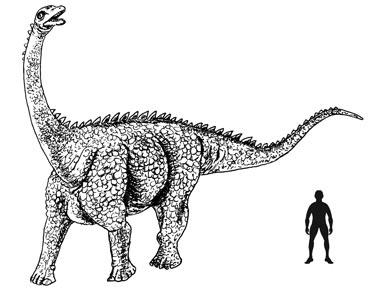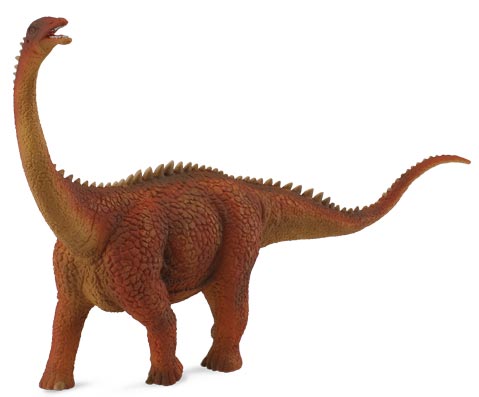The Remarkable Alamosaurus – Giant Titanosaur from North America
Alamosaurus – Largest Dinosaur Known from the United States?
During the Late Cretaceous a land bridge between what was to become North and South America allowed the migration northwards of titanosaurs, long-necked dinosaurs. This was the first time in perhaps as much as thirty-five million years that these huge animals had been present in the region we now know as the United States. Today, we look at the titanosaur Alamosaurus.
The Titanosaur Alamosaurus
Alamosaurus is known from several partial skeletons and numerous individual bones that have been found in Mexico and throughout the south-western United States from Texas, New Mexico and Utah. It was one of the last sauropods to live in North America and these types of dinosaur may have been limited to the more southerly part of that continent as the climate may have been too cold for them further north. Intriguingly, strata from Alaska, the same age as those rock formations that have yielded fossils of Alamosaurus have provided no evidence of titanosaurs living in the northern most parts of the continent. It has been suggested that the distribution of titanosaurs may have been limited by the cooler climate.
Alamosaurus (Alamosaurus sanjuanensis) was named and described by the American palaeontologist Charles Whitney Gilmore in 1922. Although, described as a large animal with an estimated size of twenty metres or more, recent fossil finds have suggested that individual animals could be very much bigger, perhaps rivalling some of the super-sized titanosaurs known from South America in terms of their body length and total weight.
An Illustration of Alamosaurus
Picture credit: Everything Dinosaur
Contrary to popular belief this dinosaur was not named after the Alamo mission, the site of a famous battle near to San Antonio in Texas that took place in 1836. The genus name derives from the Ojo Alamo Formation, the name of the geological formation where the fossils of this dinosaur were first discovered. The word “alamo” is the local Spanish term for a species of cottonwood tree that is common in this area.
Late Cretaceous Dinosaur Biota
It seems that in the Late Cretaceous, the fauna of the southern United States was dominated by ornithischian dinosaurs, primarily duck-billed dinosaurs and ceratopsians (horned dinosaurs such as Torosaurus), although there were sauropods present. Ornithomimid fossils (bird-mimic) dinosaurs have been found in Upper Cretaceous strata from this part of the world and the main predators were tyrannosaurs and the much smaller, agile dromaeosaurs. With forests of maple, horse chestnuts, sycamores and birch the flora would have looked very familiar to us. Dinosaurs such as Alamosaurus would have looked quite incongruous in such familiar woodland surroundings.
CollectA introduced a not-to-scale model of Alamosaurus a few months ago. This model is well crafted and is a fine depiction of a titanosaur.
The Alamosaurus Dinosaur Model from CollectA
Picture credit: Everything Dinosaur
CollectA introduced a few months ago a model of this titanosaur. It is part of their not-to-scale prehistoric animal model range, to view Everything Dinosaur’s model range including the CollectA Age of Dinosaurs range: CollectA Age of Dinosaurs Models and Replicas.



